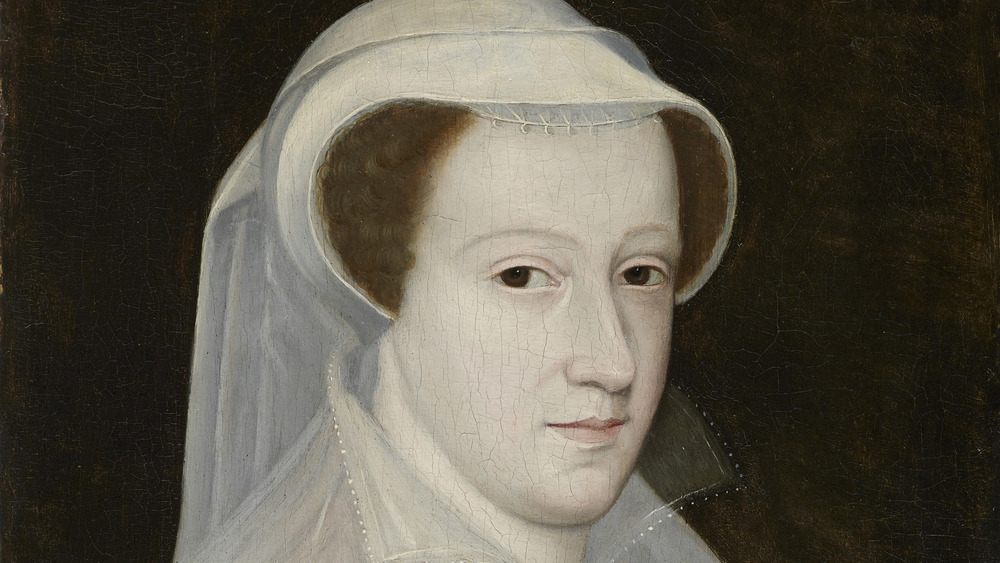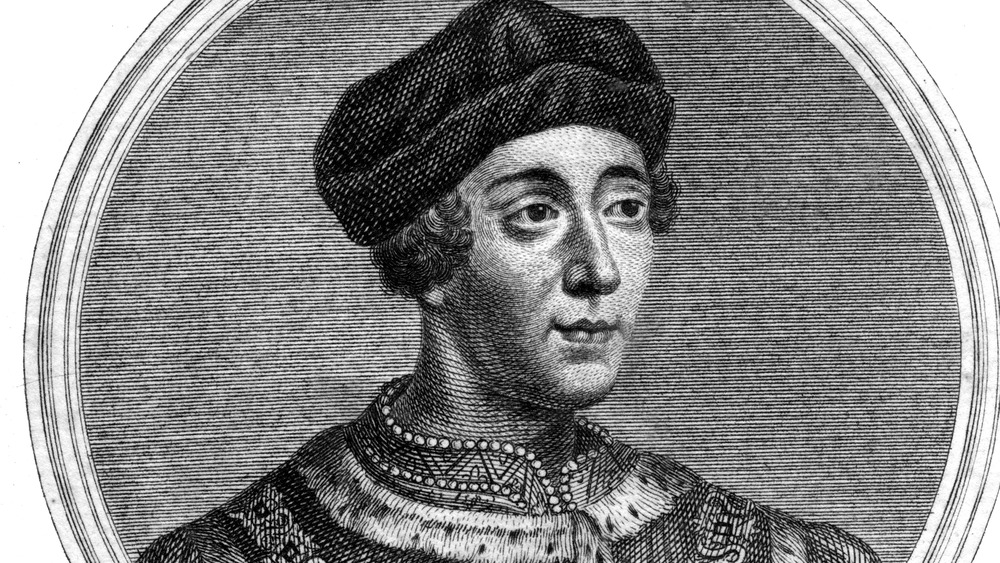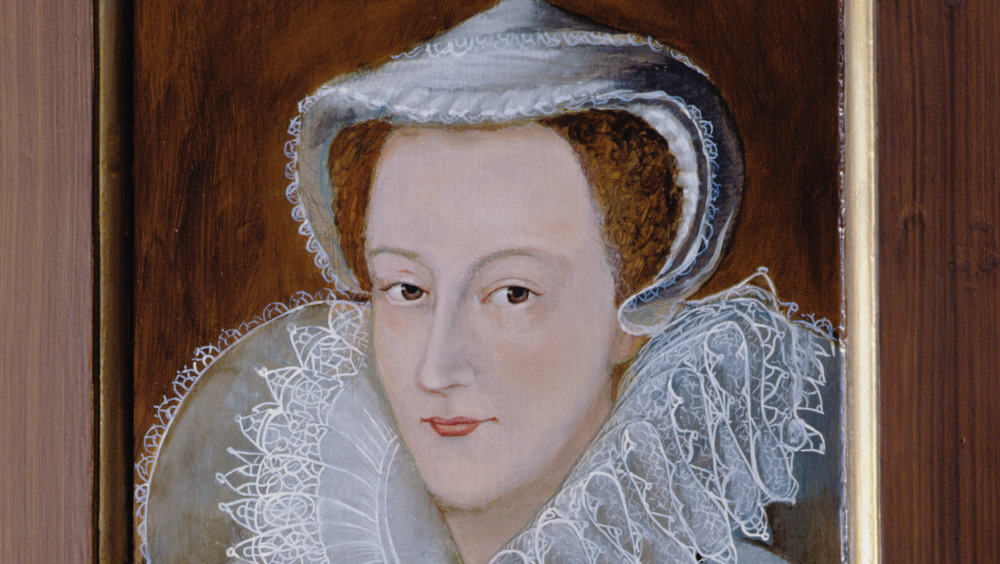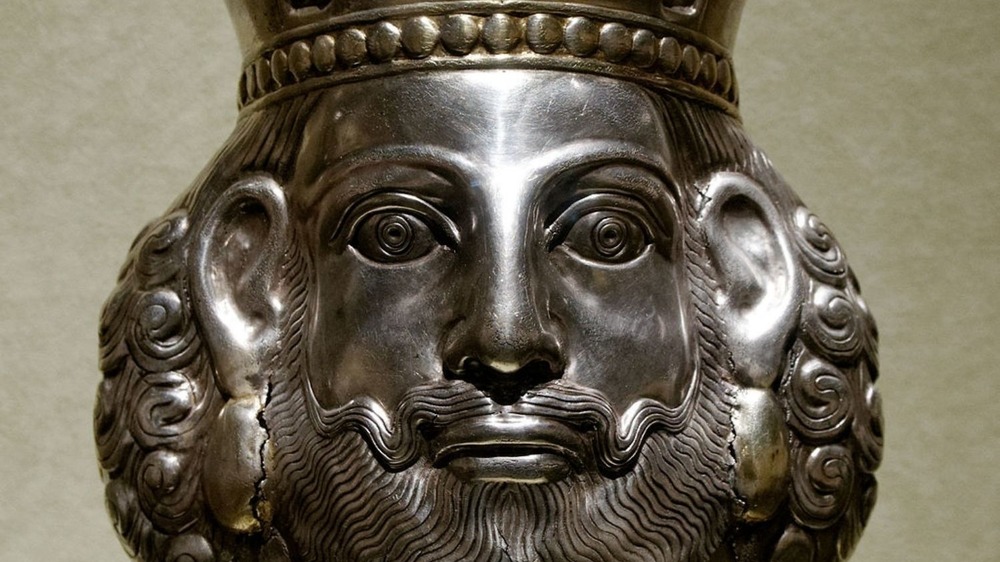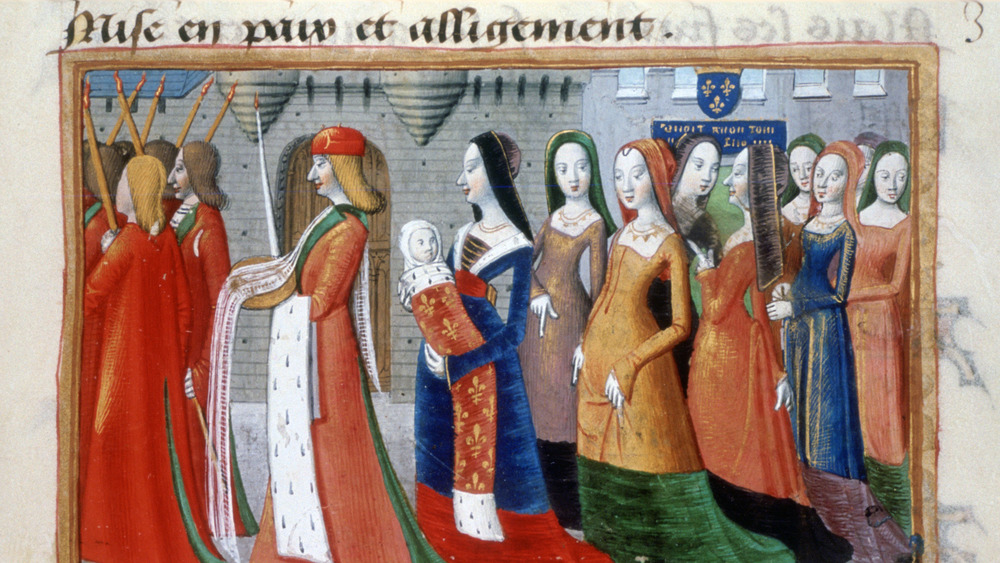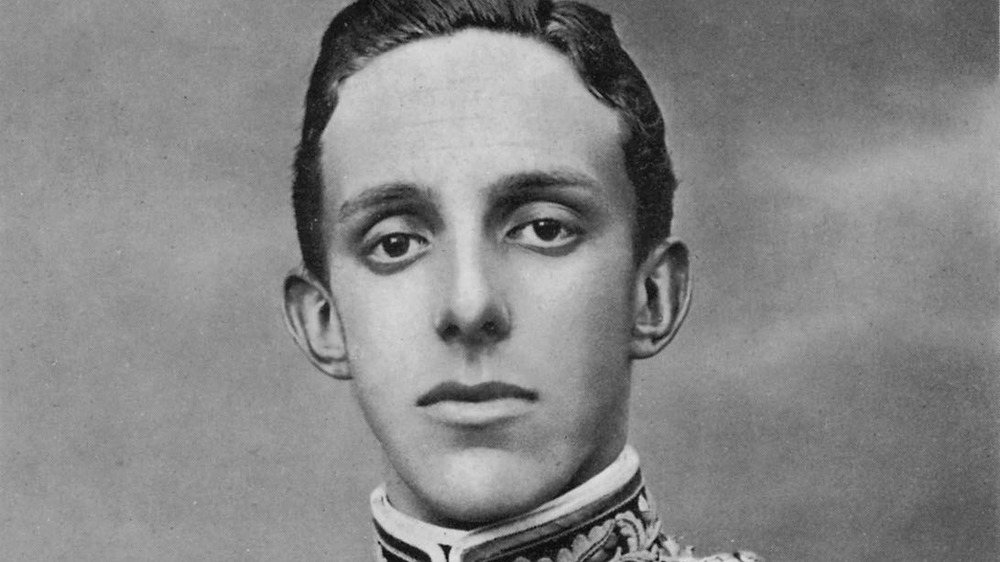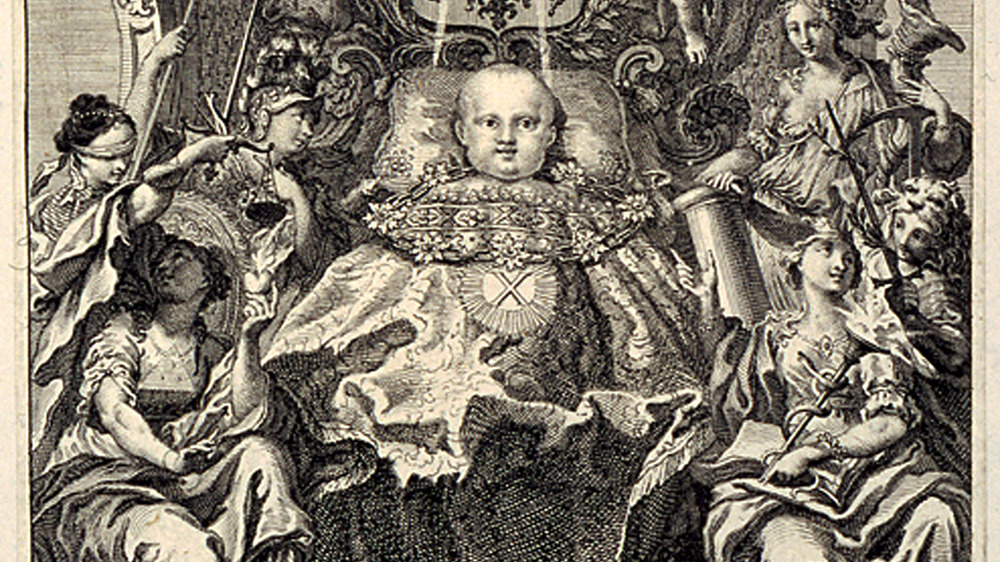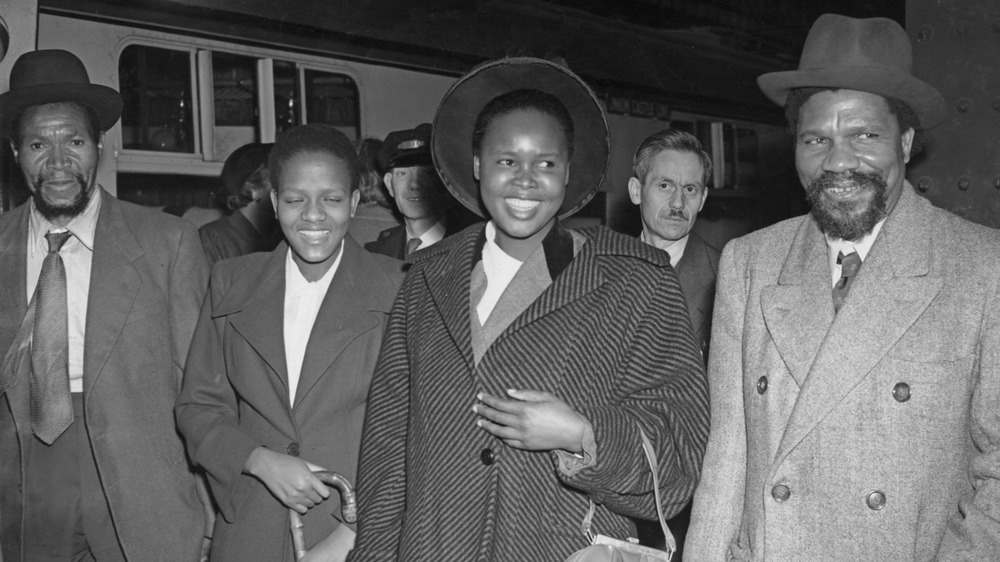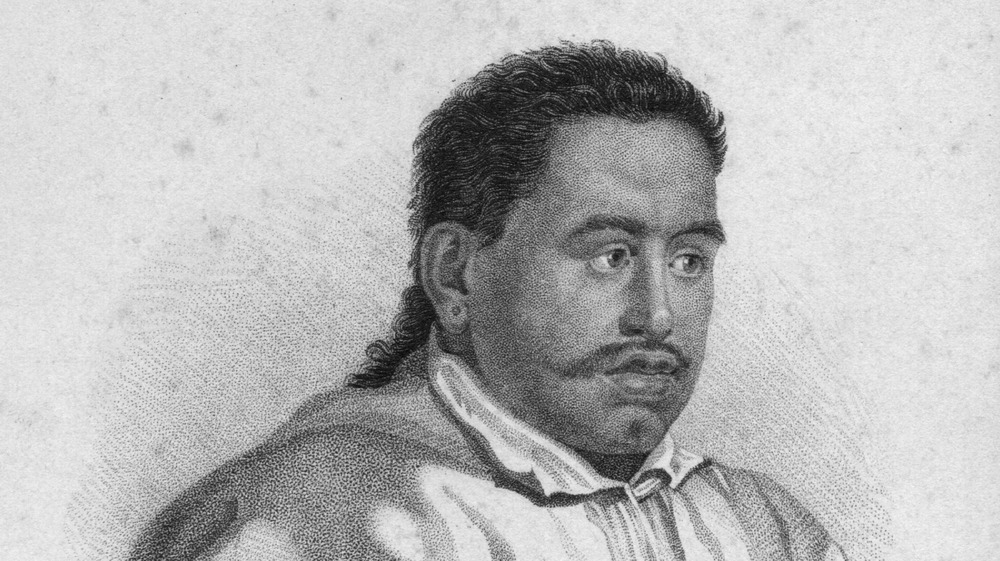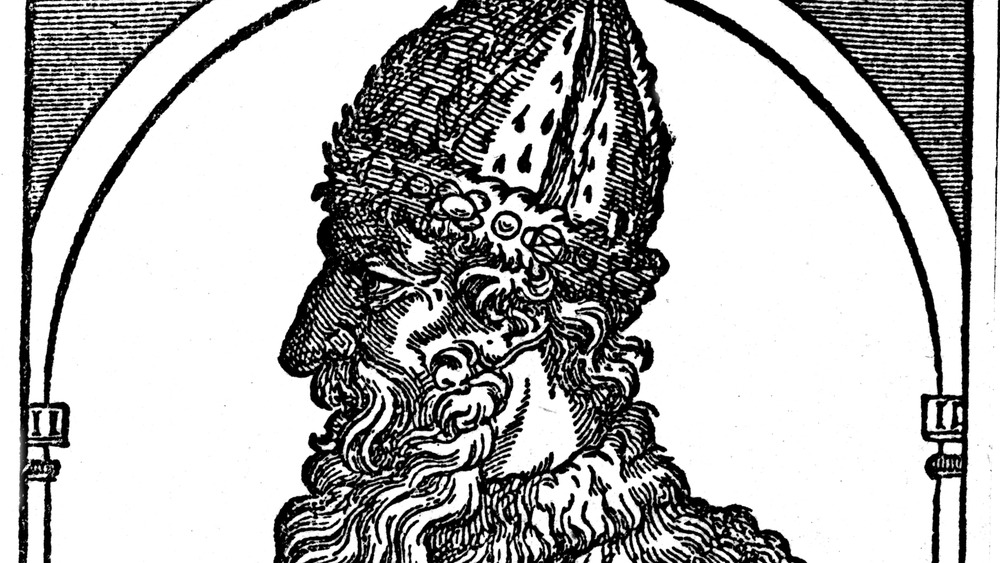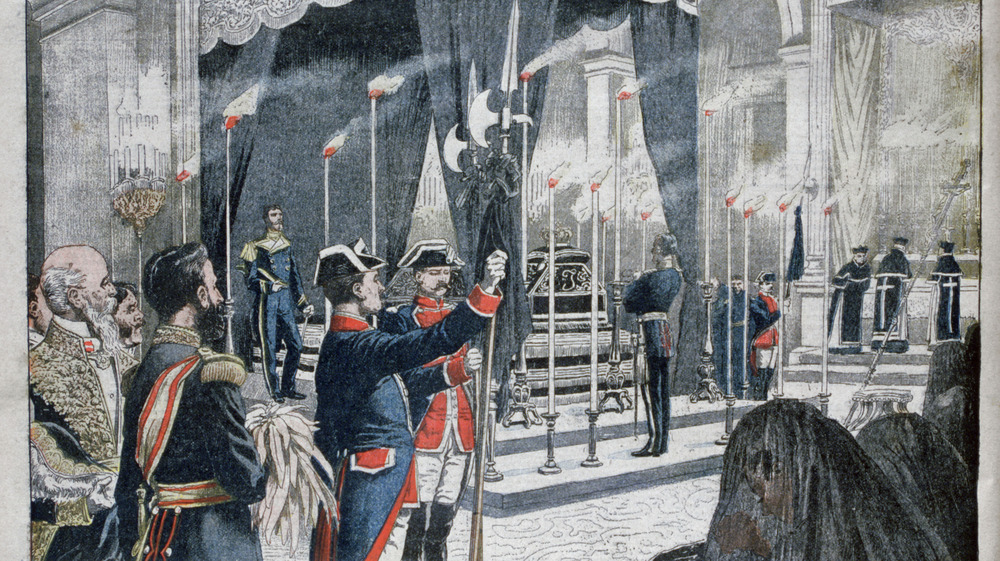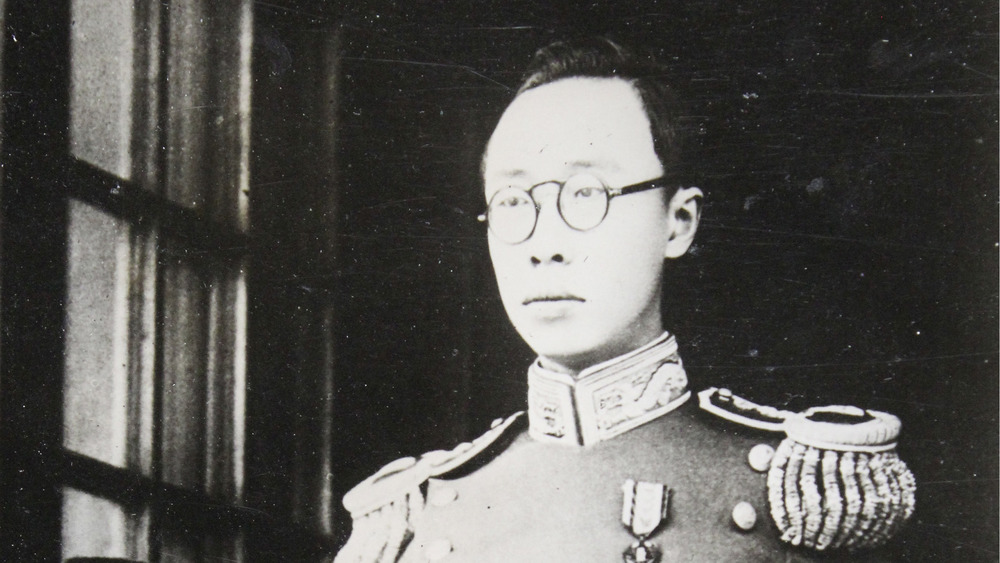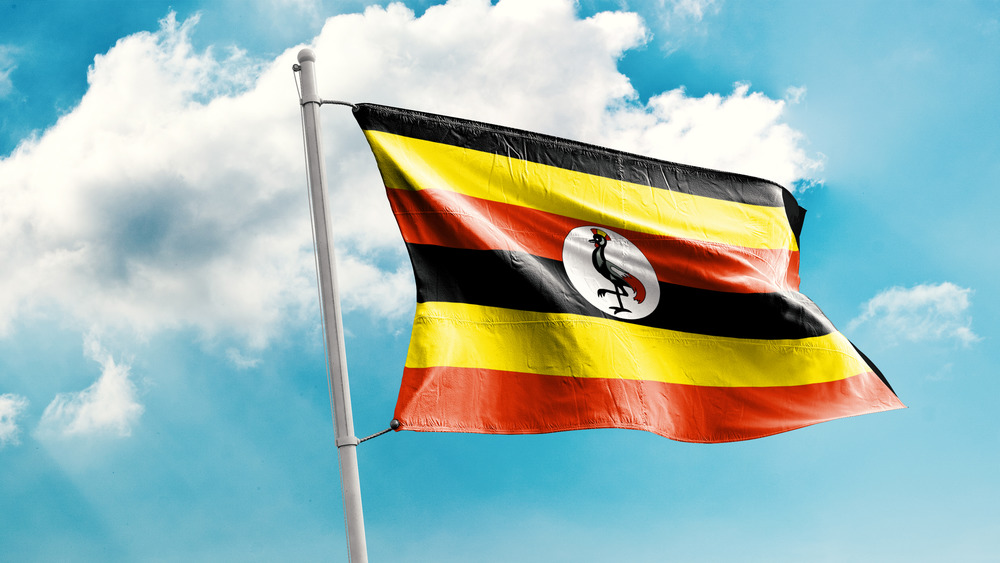The Most Powerful Royal Infants In History
The thought of a baby monarch raises a lot of attention and often a few chuckles. It could be both amusing and a little perturbing to imagine that the fate of your entire country rests in the infantile hands of a child who can't even feed itself. But how much power did these child rulers actually have? Were powerful, grown adults really subject to the whims of a toddler? The truth is, not as much as you might assume. Whenever there has been a baby or young child crowned monarch of an entire country, there's almost always an adult regent appointed to handle affairs of state until the child comes of age. No one had to worry about a toddler king declaring war on a neighboring country because someone stole his candy.
However, being crowned a monarch at a young age was often a highly precarious position to be in. They were far more susceptible to danger. There were plenty of enemies both at home and abroad who would seek to manipulate, kidnap, or control a young ruler for their own gain. That meant a child ruler needed extra protection — and if that didn't happen, it could end in disaster for the child and for the entire country. These are some of the most powerful royal infants in history.
King Henry VI of England
After Henry V's death, Henry VI was crowned king of England at 9 months old — he would be known to history as the last Lancastrian king. Until the baby king was old enough to rule, a regency council was put in place. However, once Henry was deemed old enough to rule, it was soon apparent that he wasn't going to be the leader that England needed or wanted. According to the BBC, Henry had only a passing interest in actually governing and preferred a life of piety. He also had a gift for selecting the wrong advisors, which allowed rivalries and power struggles to flourish at his court. When England ended up losing several French territories — including its grip on Normandy — on his watch, Henry saw a distinct decline in respect for his authority.
In 1453, Henry experienced a mental breakdown, which led to Richard, the duke of York, becoming his protector. Henry did recover, but, by that time, total civil war had broken out between the Yorks and the Lancastrians — the War of the Roses. The conflict would last for 32 years, but for Henry VI, it all ended in 1471 with his imprisonment and murder in the Tower of London.
Mary, Queen of Scots
Mary wasn't a princess for very long. Only a few days after her birth, her father died prematurely of a mysterious illness while he was away at war with England. At only six days old, she was crowned Mary, Queen of Scots. Her mother, Mary of Guise, ruled as regent. According to Historic UK, the young Mary spent most of her childhood at the court of France rather than Scotland. Mary was sent to France — her mother's homeland — where she was betrothed to the dauphin, whom she married at 14. Mary did become the queen of France for a short time, but when her husband, Francis II, died after an illness, she returned to Scotland at the age of 18.
For most of Mary's life as queen, she would be pitted against her cousin, Queen Elizabeth I of England. Mary was Catholic, and Elizabeth was Protestant — and there was a significant Catholic faction that believed Mary, not Elizabeth, was the rightful queen of England. Mary, however, did not possess the political savvy of Elizabeth and made some critical mistakes when it came to her marriages. Her second marriage was to Henry Darnley, an imbecilic drunk, then to the earl of Bothwell, who was suspected of murdering Darnley, leading to Mary's forced abdication. Mary fled to England seeking asylum from Elizabeth and ended up a political prisoner for 19 years. After Mary was implicated in a plot to overthrow Elizabeth, she was executed at the age of 44.
Sha Shapur II of Persia
Sha Shapur II was technically king of Persia's Sasanian Empire before he was even born, as his father died just before his birth in 309. As noted by Insider, there's even a legend claiming that Shapur was crowned while still in the womb, and that the crown was actually placed on his mother's belly — granted, this tale is probably an exaggeration. Shapur's advisors governed Persia until he was 16 and considered old enough to rule. According to Britannica, Shapur is best remembered for his almost lifelong campaign against the Roman Empire, starting with Armenia and Mesopotamia's retaking, two areas that his predecessors lost to the Romans long ago.
After negotiations with Emperor Constantius failed, Shapur launched a full attack on northern Mesopotamia and reconquered the area. In 363, Roman Emperor Julian tried to launch an attack to retake Mesopotamia but was killed in the conflict. Julian's successor, Jovian, was forced into a humiliating surrender and had to turn five Roman provinces over to Shapur. Turning to Armenia, Shapur was able to defeat the country's pro-Roman ruler and eventually gained full control of Armenia. At the time of his death, Shapur had made the Persian Empire stronger than it had ever been. Although, continuous wars with Rome would eventually undermine the Sasanians' influence in the long run.
John I of France
John I was also known as John the Posthumous, and for good reason. The son of Louis X and his second wife, Clemence of Hungary, John was crowned king of France upon his birth in 1316. His father died at the age of 26 and just a few months before the birth of his only son. However, John I's reign was notably short and inconsequential — the infant king died a mere five days after his birth and coronation. According to Insider, Louis X's brother, Philip V, ascended the throne in his place. Some speculated that Philip might have poisoned his baby nephew or perhaps had him stolen and replaced with a dead baby. Nothing was ever proven, and Philip ruled until his death in 1322.
According to Britannica, there was one incident in 1358 where a Florentine man named Giannino managed to convince Louis I of Hungary — the nephew of Clemence — that he was actually the real John I. However, Giannino didn't make any real strides towards gaining any wealth or power from his claim — he ended up dying in jail in 1363.
Alfonso XIII of Spain
Alfonso XIII was crowned king of Spain immediately after his birth after his father, Alfonso XII, died six months before his birth in 1886. Until he was 16, his mother, Queen María Christina of Habsburg-Lorraine, ruled as regent. According to Britannica, Alfonso was said to be lively and intelligent as a child, but he was also raised in an ultra-religious and reactionary atmosphere brought about by an overly doting mother — this would not set the best precedent for Alfonso's formidable ruling years.
Alfonso enjoyed being in authority, but he was never particularly consistent about what kind of government he actually supported. He wavered between liberal and conservative government systems and intervened in political matters to influence government shifts to the point where Spain was teetering on political instability. Alfonso's popularity took a massive hit, and there was at least one assassination attempt against him and his wife, Victoria Eugenia. According to Insider, Alfonso managed to get Spain through World War I. But, after the Socialist and Republican parties' victories in the Spanish parliament, they pressured Alfonso to abdicate. Alfonso never technically abdicated, but he did leave the country and spent the rest of his life living in exile in Italy and France.
Ivan VI of Russia
The story of Ivan VI, Russia's youngest tsar, is a real-life Russian version of The Man In The Iron Mask story — but there are no happy endings here. According to Russia Beyond, Ivan VI was crowned tsar in 1740 when he was only two months old, but his mother, Empress Anna, ruled as regent in his stead. Little Ivan's "reign" did not last long — only for a year. His cousin, Elizabeth, organized a coup against Ivan and his mother, taking the Russian throne for herself.
Elizabeth had a hard time figuring out what to do with her deposed relatives. She considered exiling them until it was pointed out that Ivan, a legitimate heir, could be used as a pawn by the wrong people, which meant Elizabeth could have another insurrection on her hands — against herself. So, she decided the safer option was to keep her relatives in captivity in Russia. Anna and Ivan were kept in an isolated house until Anna died in 1746. Later, in 1756, Ivan was sent to a maximum-security prison usually reserved for the worst criminal offenses. The guards were forbidden from speaking to him. In fact, Elizabeth would not allow anyone to speak Ivan's name. Insider noted that after 20 years of being imprisoned in some capacity, Ivan's mental health was shattered. During a miscalculated attempt to free the former child tsar, Ivan ended up murdered by his jailers.
Sobhuza II of Swaziland
Sobhuza II had a shockingly long reign as the king of Swaziland — over 82 years. Sobhuza's father died when he was only a few months old. According to Britannica, his mother was regent until 1921 when Sobhuza was 22 — he was finally installed as a constitutional monarch. At that time of his initial rule, Swaziland was actually one of Britain's High Commission territories in southern Africa. And Sobhuza wanted that to change. He fought hard to win Swaziland's independence from Britain, and it took decades, but finally, in 1968, Swaziland became an independent nation. Initially, Swaziland was going to be a limited monarchy with an elected legislature, but in 1973, Sobhuza secretly raised and equipped a private army that allowed him to take absolute power of Swaziland, dissolve the legislature, and abolish political parties.
As noted by Insider, when he died at age 82, Sobhuza had helped create a booming economy for Swaziland — and his many marriages allowed him to cement political alliances that helped tie the country together. At his death, Sobhuza had at least 70 wives and an estimate of 100-500 children.
Pomare III of Tahiti
Pomare III was 17 months old when he became king of Tahiti in 1821 — he was the son of Pomare II and his second wife, Queen Teriʻitoʻoterai Teremoemoe. Until he was old enough to rule, Pomare's mother was in charge of governing. According to Britannica, Pomare's father, Pomare II, decided to welcome Christianity in Tahiti and established a new, reformed kingdom with a scriptural code of law. However, after the former king's death, there would come new challenges to the "missionary kingdom" Pomare II created and conflicts around the power the Christian missionaries of Tahiti possessed.
Little Pomare III's reign did not last long. At the age of 5, he became gravely ill and died of dysentery, so there probably wasn't any foul play involved in his death. Pomare III would be succeeded by his then 14-year-old sister, Aimata Pōmare IV Vahine-o-Punuateraitua, otherwise known as Queen Pomare IV.
Ivan IV of Russia
His grandfather was Ivan the Great, but this Ivan would be known to history as "Ivan the Terrible." According to Biography, Ivan was crowned Grand Prince of Russia in 1533 at age 3 after his father's death. His mother, Elena Glinskaya, served as the regent until her death five years later, when Ivan was 8. Russia was placed under the control of a group of Russian aristocrats called the boyars. The orphaned Ivan was said to have been highly intelligent and sensitive as a child but was subjected to abuse by the ruling boyars. Once he turned 16, according to Insider, Ivan reclaimed power by publicly throwing one of the ruling aristocrats to his hunting dogs. The boyars very dutifully gave up their power, and Ivan was officially tsar of Russia.
Ivan's 37-year reign was a long one and not a particularly enjoyable one for the Russian people. Between years of childhood abuse and very likely a long-held inherited mental illness, Ivan certainly earned his nickname, "The Terrible." Ivan had a murderous streak and demanded absolute power and loyalty from those around him. He organized a special police force to publicly execute anyone he even remotely suspected of disloyalty. Paranoid and insane, Ivan even beat his pregnant daughter-in-law, causing her to miscarry, and in a murderous rage, killed his own son. By the time Ivan died of what appeared to be a sudden stroke or heart attack, Russia was deep in political and social chaos.
Isabella II of Spain
Isabella was the eldest daughter of Ferdinand VII and his wife, Maria Cristina. When her father died in 1833, Isabella was declared Spain's new queen when she was 3 years old. However, Isabella's succession was a major point of conflict in Spain. According to Insider, many refused to acknowledge a woman monarch, believing that Isabella's uncle, Don Carlos, should rule instead. This led to an outbreak of civil war (called the Carlist Wars), with Isabella's mother and Gen. Baldomero Espartero at the helm acting as regents. Isabella was declared of age to rule when she was 13.
However, according to Britannica, Isabella's 25 years on the throne were plagued by political instability and violent uprisings. And even worse for Isabella, her private life came under attack. The public was apparently shocked by reports that Isabella didn't actually live with her own husband, leading to speculation of immoral conduct. In 1868, another uprising, this time a successful one, drove Isabella into exile in France. She eventually officially abdicated in 1870 in favor of her eldest son, Alfonso XII.
Puyi of China
Puyi, the last emperor of China, definitely had a strange life. According to Britannica, he was named emperor of the Manchu Dynasty in 1909 when he was only 2 years old, after his uncle's death. He only held the title for three years. In 1912, the Chinese Revolution came, overthrew the imperial system, and forced Puyi to abdicate — the revolution would establish the Republic of China. Although he was no longer emperor, Puyi was allowed to live in relative luxury in Beijing for several years. As noted by Insider, in 1924, he ended up secretly leaving Beijing and relocated to Japan. Later, he was installed as a puppet emperor of the Japanese-controlled Chinese province of Manchukuo.
After World War II, Puyi was taken prisoner by the Russians and imprisoned in Siberia for five years until he was sent back to China to be charged and tried as a war criminal. He received a pardon in 1959, and Puyi lived out the rest of his days as a gardener and researcher.
Oyo of Toro, Uganda
There are still monarchies in the modern-day — and the Toro Kingdom of Uganda has one of the youngest reigning monarchs in the world today. King Oyo Nyimba Kabamba Iguru Rukidi IV, or King Oyo as he is known, was crowned king in 1995 when he was only 3 years old, after his father died at the early age of 50. According to CNN, at his coronation, the toddler king sat on a miniature throne, playing with his toys. He eventually threw off his too-heavy crown and ran to sit in his mother's lap. In an interview with CNN, Oyo recalled his growing up as a king.
"The first few years, I did not know what was going on. I think I realized when I was about six that I really was king, and my life was going to be different. I was going to have responsibilities toward a lot of people."
Oyo's youth hasn't impeded his popularity with his people — many are enthusiastic about having a young king. CNN interviewed carpenter Ruhweza Remigious and asked his thoughts on Toro's monarch. "Most Africans are led by older people who don't do anything. He is young and eager, and we hope he will give us a better life and modernize our infrastructures."
Today, Oyo is now in his late 20s, and one of his most important projects is working with the United Nations to help stop the spread of AIDS. According to UNAIDS, Oyo is committed to ending the epidemic by 2030.
